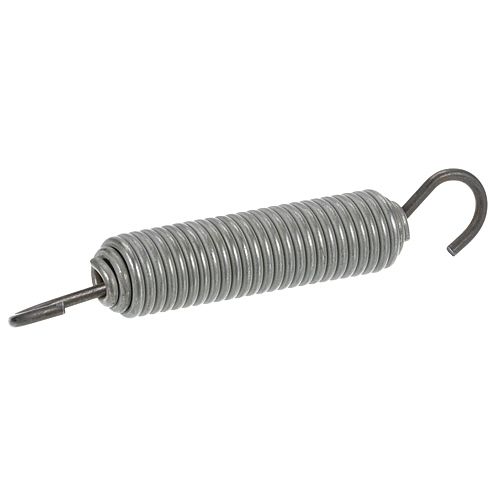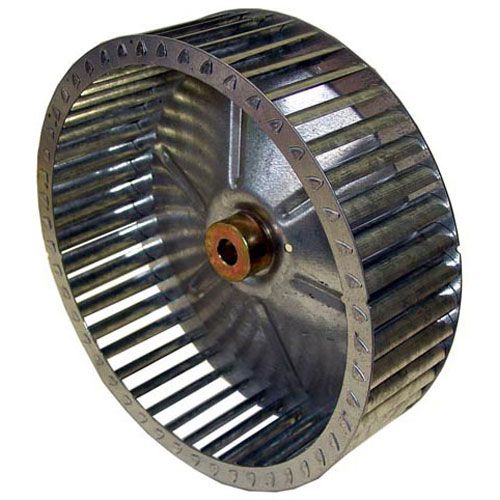Restaurant Equipment Trends to Watch for in the Foodservice Industry
The foodservice industry has been dynamic in nature to adapt the new consumer trends, improve organizational effectiveness and integrate technology. When advancing to 2024 and further, several trends in the restaurant equipment are following, which define the preparation, serving, and management of the dishes. These trends are about sustainability, automation, smart technology, and kitchen, and they bring the opportunity for the restaurant operators to update their equipment and improve their processes. It is now high time to look at the most significant restaurant equipment trends that will define the foodservice industry in the near future.
1. Smart Kitchen Technology: Revolutionizing Foodservice Operations
Smart kitchen equipment has emerged as one of the most important trends in the foodservice industry. Smart ovens and refrigerators, smart dishwashers and coffee machines, as well as many other devices are the trends that are changing the restaurants’ environment. These smart appliances come equipped with sensors, remote monitoring, and data analytics, helping restaurant operators manage their kitchens more effectively.
For example, smart ovens can automatically adjust cooking times and temperatures based on the type of dish being prepared, reducing human error and improving consistency. Similarly, smart refrigerators and freezers can monitor temperature and send alerts if there’s a problem, helping reduce food waste and ensure safety compliance. The integration of smart technology into the kitchen also supports real-time performance tracking, helping chefs and managers optimize energy usage, prevent breakdowns, and maintain the quality of the food served.
Looking to upgrade your restaurant with the latest equipment trends? At PartsFe, we offer a wide range of commercial restaurant equipment parts, including ice maker parts, fryer components, refrigeration parts, and more. Whether you need oven thermostats, dishwashing pumps, we have the parts you need to optimize your kitchen operations. Visit PartsFe for reliable, high-quality replacements that keep your kitchen running smoothly.
2. Energy-Efficient Equipment: Reducing Costs and Carbon Footprint
With sustainability becoming a priority for both restaurant operators and customers, energy-efficient equipment is in high demand. Energy-efficient appliances help foodservice businesses reduce utility costs while minimizing their environmental impact. The trend is pushing manufacturers to develop equipment that consumes less energy without compromising performance.
Energy-efficient fryers, ovens, and dishwashers are becoming more commonplace in commercial kitchens. These devices are designed to minimize power consumption and water usage, making them ideal for restaurants aiming to reduce overhead costs. Additionally, some energy-efficient kitchen equipment is built to meet strict environmental regulations, positioning restaurants as responsible businesses that care about their carbon footprint.
3. Robotic and Automated Kitchen Solutions: The Future of Food Preparation
Robotics and automation are changing the way food is prepared in kitchens. From robotic chefs that can cook meals to automated pizza makers, the trend toward using machines to handle repetitive tasks is growing rapidly. These automated systems not only increase the speed of food production but also enhance consistency, making them a valuable addition to high-volume kitchens.
Robotic arms can now perform tasks such as flipping burgers, stirring sauces, or plating food. Meanwhile, automated cooking systems use AI to learn and adjust cooking times and temperatures, ensuring each dish is prepared to perfection. This trend is particularly appealing to fast-casual chains and restaurants with high turnover rates, as it minimizes human error and improves operational efficiency.
4. Contactless Technology: Enhancing Customer Experience and Safety
As the pandemic continues to influence the foodservice industry, contactless technology remains a key trend. In addition to its hygiene benefits, contactless technology provides customers with greater convenience, allowing them to place orders and make payments without direct interaction with staff. This technology includes self-order kiosks, mobile apps, and QR code-based menus.
Restaurants are increasingly adopting self-ordering kiosks, where customers can browse the menu, place their orders, and even pay for their meals without ever interacting with a server. This minimizes wait times, increases table turnover, and improves the overall customer experience. In addition, QR code menus allow diners to view the restaurant’s offerings on their smartphones, reducing the need for physical menus and enhancing sanitation.
5. Sustainable Materials: Eco-Friendly Equipment and Packaging
In line with the growing trend of sustainability, restaurant equipment manufacturers are focusing on creating eco-friendly products. This includes using sustainable materials for kitchen equipment, packaging, and even utensils. Materials such as bamboo, recycled plastics, and biodegradable alternatives are gaining traction, helping restaurants reduce their environmental impact.
Moreover, equipment made from stainless steel and other long-lasting materials is becoming increasingly popular. These materials not only extend the lifespan of kitchen equipment but also offer ease of maintenance and durability, which is essential for high-volume environments. For packaging, compostable takeout containers and biodegradable food wraps are becoming mainstream as restaurants strive to reduce plastic waste.
Also Read on: Future Trends: What's Next For Restaurant Equipment?
6. Modular Kitchen Equipment: Flexibility and Scalability for Growing Restaurants
As the foodservice industry becomes more dynamic and adaptive to consumer trends, modular kitchen equipment is gaining popularity. This equipment allows restaurants to customize their kitchen setup to fit their specific needs. Whether it’s a small kitchen in a fast-casual setting or a large-scale operation, modular equipment offers flexibility and scalability.
Modular systems allow restaurants to add, remove, or reconfigure units as needed. For instance, a restaurant that experiences a spike in business during peak hours can quickly increase its capacity by adding more cooking or refrigeration units. Additionally, modular equipment is often easier to maintain and repair, reducing downtime and increasing the overall efficiency of the operation.
7. Advanced Ventilation Systems: Improving Air Quality and Comfort
The importance of air quality and ventilation has become more evident in recent years, especially in kitchens where heat, smoke, and steam are prevalent. Advanced ventilation systems that regulate airflow and maintain a comfortable working environment are becoming essential in commercial kitchens. These systems not only improve kitchen comfort but also play a crucial role in reducing energy consumption.
New ventilation technologies are designed to operate more efficiently, using smart sensors and AI to monitor air quality and adjust ventilation levels accordingly. This helps maintain the ideal cooking environment while reducing the amount of energy required to operate the system. These systems can also help with odor control, ensuring a pleasant dining experience for customers and a comfortable workspace for kitchen staff.
8. Advanced Dishwashing Systems: Improving Hygiene and Efficiency
The dishwashing process in a restaurant is critical to maintaining high hygiene standards and efficient operations. Advanced dishwashing systems are designed to improve sanitation, reduce water and detergent usage, and speed up the washing process. These systems use high-pressure jets and special sanitizing agents to ensure that dishes are thoroughly cleaned and sanitized.
Moreover, newer dishwashers are designed with energy efficiency in mind. With innovations like quick-wash cycles, low-water consumption features, and energy-efficient drying systems, modern dishwashing machines are helping restaurants save on both water and energy bills. This equipment is especially valuable in high-volume operations where speed and efficiency are crucial.
9. AI-Powered Inventory Management: Streamlining Stock Control
Inventory management has always been a challenging aspect of restaurant operations. However, AI-powered inventory systems are now simplifying the process by using machine learning algorithms to track stock levels, predict demand, and automate ordering. These systems can reduce food waste, optimize supply chain operations, and ensure that restaurants always have the ingredients they need on hand.
AI inventory management systems can track usage patterns, alert managers when supplies are running low, and even suggest adjustments based on customer demand trends. This not only reduces waste but also helps restaurants cut costs by avoiding overstocking and ensuring that food is always fresh.
10. Cloud-Based POS Systems: Enhancing Flexibility and Data Access
Cloud-based Point of Sale (POS) systems are another key trend in restaurant technology. These systems allow restaurants to access their sales data from anywhere, providing valuable insights into sales performance, customer preferences, and inventory levels. Cloud-based POS systems are also highly flexible, enabling restaurants to make real-time updates and adjustments to their menus, pricing, and promotions.Additionally, cloud-based POS systems often integrate seamlessly with other kitchen and restaurant equipment, such as smart ovens and inventory management tools. This integration streamlines operations, improves data accuracy, and enhances decision-making, ultimately leading to better customer service and improved business performance.
The restaurant industry is on the verge of significant transformation, driven by technological advancements and a focus on sustainability. Whether it’s adopting smart kitchen equipment, investing in energy-efficient appliances, or leveraging AI-powered tools for inventory and operations, staying ahead of these trends will give restaurant operators a competitive edge.As we look to the future, embracing these restaurant equipment trends will help businesses increase efficiency, reduce operational costs, and improve customer satisfaction. By keeping an eye on these developments and adapting to new technologies, restaurants can position themselves for success in a rapidly changing industry.
FAQs
What are smart kitchen technologies and how can they benefit my restaurant?
Smart kitchen technologies, like AI-driven ovens and smart refrigerators, help streamline operations, reduce energy costs, and improve food consistency. These innovations also allow for real-time performance tracking and maintenance alerts.
How can energy-efficient equipment reduce my restaurant’s operating costs?
Energy-efficient equipment, such as low-energy fryers and dishwashers, cuts down on utility bills and reduces your restaurant’s carbon footprint. These appliances are designed to use less power and water, offering long-term savings.
What is modular kitchen equipment, and how can it help my business?
Modular kitchen equipment offers flexibility and scalability, allowing you to customize your kitchen setup to fit your needs. This adaptable approach helps increase efficiency, especially in growing restaurants or seasonal operations.















